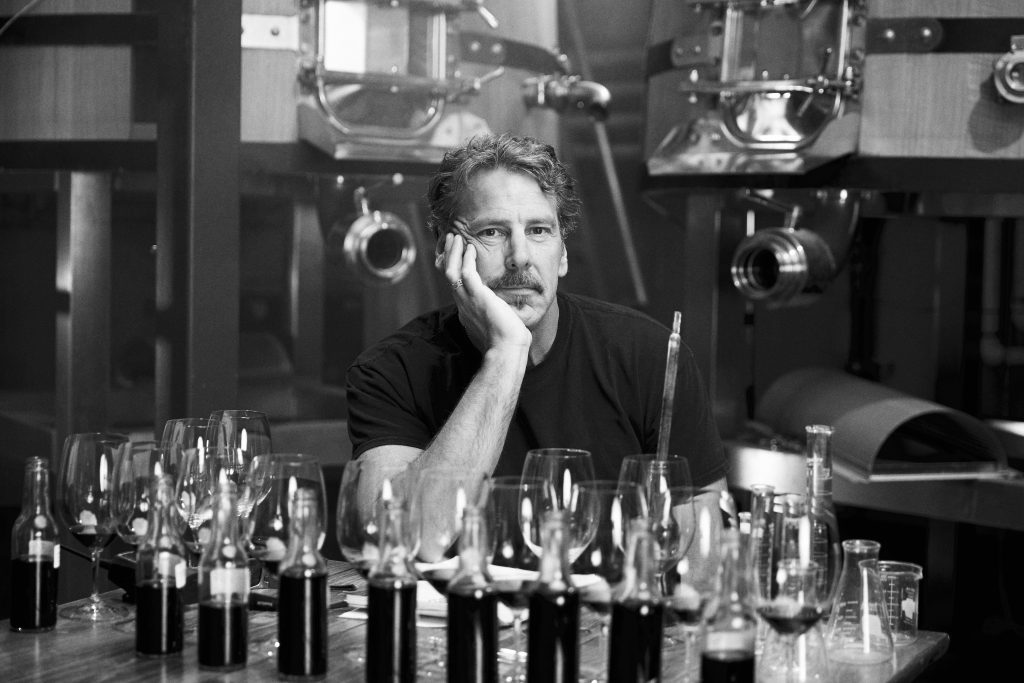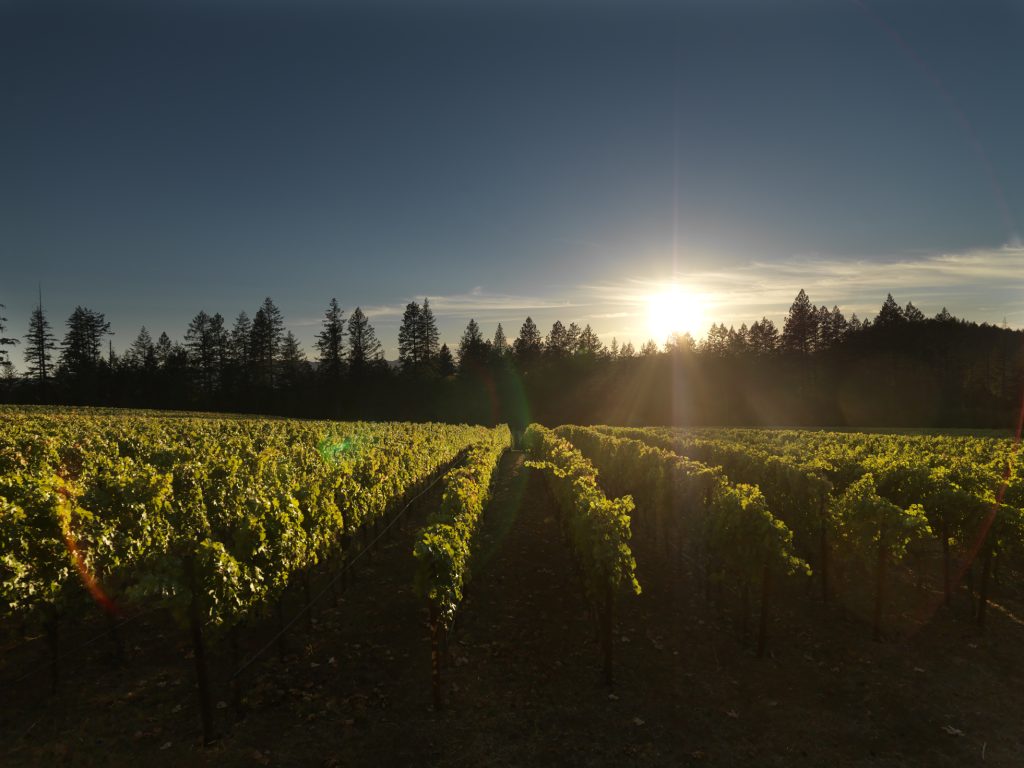This website uses cookies so that we can provide you with the best user experience possible. Cookie information is stored in your browser and performs functions such as recognising you when you return to our website and helping our team to understand which sections of the website you find most interesting and useful.
‘Serious’ Merlot and the lingering Sideways effect
Jackson Family Wines winemaker Chris Carpenter is best-known for crafting mountain Cabernets from high-altitude vineyards above Napa Valley – but he’s every bit as proud of his Merlot and Chardonnay, as Richard Woodard discovers.

In January, UK cinema-goers will have the opportunity to view The Holdovers, a comedy-drama set in a New England prep school. The film is noteworthy for reuniting director Alexander Payne and actor Paul Giamatti – two vital parts of what made wine-centred buddy pic and road movie Sideways such a success.
It’s almost 20 years since Giamatti’s Miles uttered the line – “I am NOT drinkin’ any f**kin’ Merlot!” – that led to a fabled slump in demand for the variety – and a surge in popularity for Miles’s pet Pinot Noir. But, says Jackson Family Wines winemaker Chris Carpenter, Merlot’s travails didn’t begin with the movie’s 2004 premiere.
“At one point, people [in California] thought it was the new white Zinfandel,” he says. “Everyone planted it, and thought it was going to be an easy wine to understand. It didn’t work, because it was being grown in the wrong places. There was a lot of bad Merlot out there – they were all too lean and green.”
Then came Sideways… “The fortunate thing for the Pinot Noir crowd and the Merlot people was that the places where the Merlot was planted and didn’t work were exactly where Pinot Noir would work,” Carpenter says. “As a result, we were left with jewels of Merlot in California – and Keyes is one of them.”
‘Keyes’ is a reference to the WS Keyes Vineyard on Howell Mountain, which sits at 487 metres, well above Napa’s famous fogline. That means slightly warmer nights than in the valley below, but cooler daytime temperatures thanks the impact of altitude.
Sourced from the Keyes vineyard, La Jota Howell Mountain Merlot was launched in 2005 because, Carpenter says, late company founder Jess Jackson “wanted a wine that was not only new to the La Jota line-up, but showed the quality that we were delivering in our vineyards with Merlot”.
This despite, as Carpenter puts it, the WS Keyes Merlot being planted “on the extreme wrong soil – volcanic, not clay loam”. He is quick to add: “But you get the structure that, I think, is driven by that, and very thick skins.” Carpenter “backfills” with Cabernet Sauvignon – typically 15-20% – to bring more power to a small-volume wine of 350-500 cases in a regular vintage.
“I make a Merlot on Mount Veeder, and a blended Merlot on Spring Mountain,” Carpenter says. “I have a Merlot in Australia [at Hickinbotham in McLaren Vale]. It’s a serious variety and it should be treated as such. I’m a firm believer in helping Americans to understand that – but I think Europeans already understand it.”

If making Merlot in a Cabernet hotspot like Howell Mountain appears counter-intuitive, what about Chardonnay? No surprise, perhaps, that Carpenter has had to fight his corner to make the La Jota WS Keyes Vineyard Howell Mountain Chardonnay.
“I was in a finance meeting and the CFO asked why we still had Chardonnay on Howell Mountain,” he recalls, adding for context that a Cabernet Sauvignon vineyard in the same location could be worth as much as US$1m an acre. “If you’re making a Chardonnay and putting it in a US$40 bottle, that’s affecting your cost of goods and not meeting the value of the land.”
Carpenter’s successful counter-argument was that these were some of the last surviving Chardonnay vines in an appellation that “does Chardonnay very well”. There was just one problem: “I walked out of that room and realised I had no idea of how to make Chardonnay.”
After a lot of tasting and a growing affection for Chablis, Carpenter knew what he didn’t want: tropical fruit and butter. La Jota Howell Mountain Chardonnay is fermented in 500-litre puncheons, 10% of them new, with plenty of lees work over 24 months, but no malo. “I’m preserving the natural acidity, I’m not developing the buttery character through the bacteria,” he explains. “The texture comes from the lees.”
The use of oak is an ongoing conversation across all the wines that Carpenter makes – and he makes a lot, including Cardinale, Lokoya, La Jota, Mt Brave, Caladan and Hickinbotham. The Australian venture has taught him that he can subtly and progressively reduce the proportion of new oak in the wines, but the aim remains to use wood almost as a blending tool.
“I use oak to fill out the grapes in different appellations,” Carpenter says. “I’m not blending, so I have to use something else. Oak could get in the way of expressing place, so I try to match the barrel and the cooper to the specific location to fill in some of the gaps.”
Whether Merlot, Chardonnay or Cabernet, the overarching aim across the portfolio remains the embodiment of place – perhaps most eloquently expressed by the Lokoya range of four Cabernets sourced respectively from Mt Veeder, Howell Mountain, Spring Mountain and Diamond Mountain.
The inspiration here came from the likes of Ridge and Rosenblum Cellars, “that had started to make wines that were about terroir and place and create a series in the Zinfandel space”, says Carpenter. “We saw an opportunity to do that in the Cabernet Sauvignon space.”
The winemaking for all four is “pretty much identical” and stripped-back. While Carpenter is a fan of technology – he’s trialling the use of robots in the vineyard – that stops at the winery door. “When you start using that stuff in the winery, that kind of overt technique, it becomes more about the winemaking, and I don’t want that,” he says.
“It’s all about keeping it simple and preserving the sense of place that pays homage to the work we did in the vineyard … For Lokoya, if we have Spring, Diamond, Howell and Veeder lined up, I want you to taste the difference in each of those places.”

